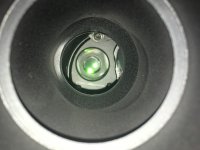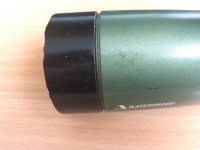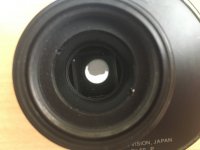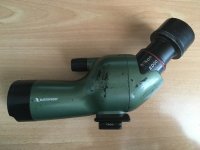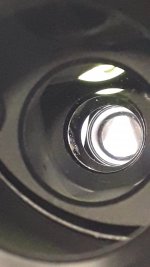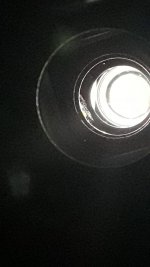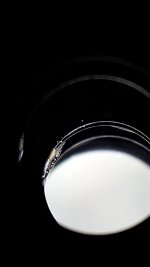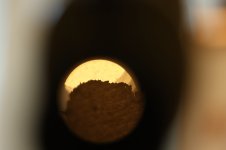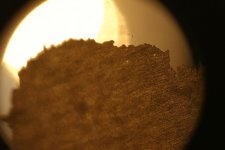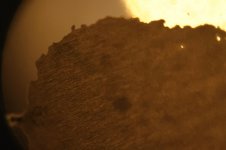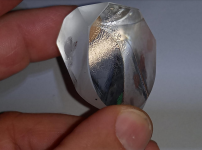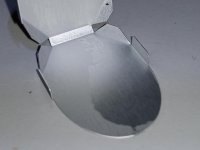temmie
Well-known member
Hi all,
contrary to what some may think when reading the title, I haven't taken the scope apart (yet), but I'm planning to do so.
After 14 years of duty, the fungus has decided to grow just a bit too hard, and has now covered almost 100% of one internal lens surface.
The problem is that this lens seems to be somewhere at the eyepiece side, but under at least one other lens that is 'open' to the air, at the eyepiece side. So it's somewhere below the first air/glass surface underneath the eyepiece.
I know for starters I can remove the objective lens as the black part is threaded and easy to unscrew.
Below, I see a (I think) hex. bolt of around 2mms, but it's recessed a lot (and I will struggle to remove that bolt). I think the bolt holts the 2 main parts of the telescope body together, but I fear a bit for the focussing mechanism and any other damage I could do when trying to separate the parts.
At the eyepiece side (much closer to the fungus), there are 2 small indentations, seemingly made for a special lens tool. I have tried to put 2 ends of sharp pliers in their and twist, but it didn't open (and I scratched the inside a bit, luckily no lenses).
Does someone have some advice...? Or a (schematic) drawing of lenses in this scope body?
I consider the telescope as a write-off, but it would be fun to be able to clean it and use it for another 14-15 years
contrary to what some may think when reading the title, I haven't taken the scope apart (yet), but I'm planning to do so.
After 14 years of duty, the fungus has decided to grow just a bit too hard, and has now covered almost 100% of one internal lens surface.
The problem is that this lens seems to be somewhere at the eyepiece side, but under at least one other lens that is 'open' to the air, at the eyepiece side. So it's somewhere below the first air/glass surface underneath the eyepiece.
I know for starters I can remove the objective lens as the black part is threaded and easy to unscrew.
Below, I see a (I think) hex. bolt of around 2mms, but it's recessed a lot (and I will struggle to remove that bolt). I think the bolt holts the 2 main parts of the telescope body together, but I fear a bit for the focussing mechanism and any other damage I could do when trying to separate the parts.
At the eyepiece side (much closer to the fungus), there are 2 small indentations, seemingly made for a special lens tool. I have tried to put 2 ends of sharp pliers in their and twist, but it didn't open (and I scratched the inside a bit, luckily no lenses).
Does someone have some advice...? Or a (schematic) drawing of lenses in this scope body?
I consider the telescope as a write-off, but it would be fun to be able to clean it and use it for another 14-15 years




